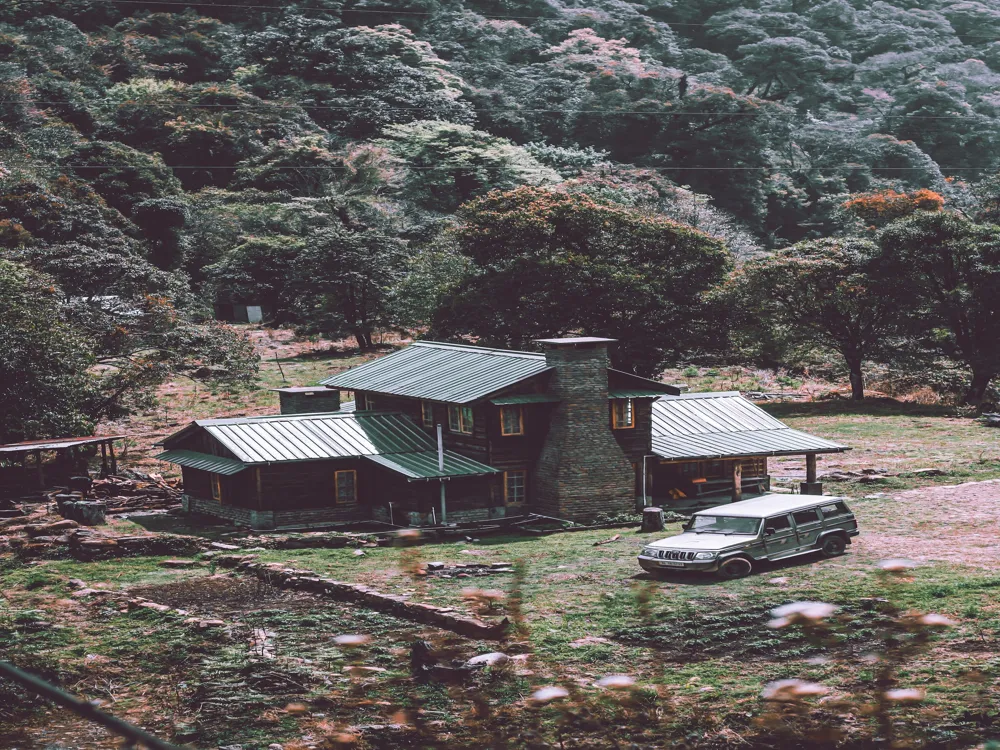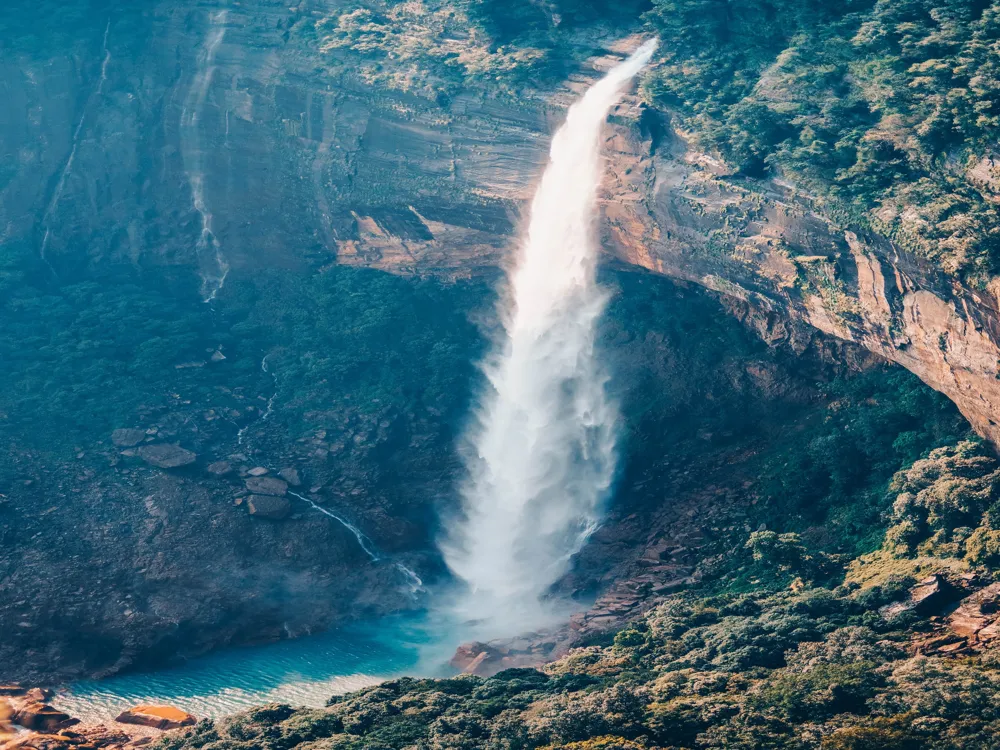Tharon Cave, a magnificent natural wonder, is situated in the enchanting state of Manipur, India, near the village of Tharon in the Imphal district. This cave is a hidden gem, offering an insightful glimpse into the geological and cultural tapestry of the region. Known for its exquisite formations and historical significance, Tharon Cave has captivated the imagination of travelers, geologists, and historians alike. Carved out of limestone, the cave extends for several kilometers, showcasing a variety of stalactites and stalagmites. These natural formations, developed over thousands of years, present a surreal landscape akin to an artist's masterpiece. The cave's intricate network of tunnels and chambers reveals the wonders of natural architecture, with each turn offering a new and unique spectacle. The lighting within the cave accentuates its features, creating an ethereal ambiance that transports visitors to a different world. Besides its natural beauty, Tharon Cave holds significant archaeological value. Excavations have unearthed evidence suggesting the cave was inhabited by humans in ancient times. Artifacts found here include tools, pottery, and remnants of hearths, providing insights into the life of early inhabitants. These discoveries have made Tharon Cave a site of great interest for archaeologists and historians, keen on unraveling the mysteries of human evolution and adaptation in this region. The cave's ecosystem is another aspect of intrigue. It supports a variety of fauna, including several species of bats, which play a crucial role in maintaining the ecological balance. The constant temperature and humidity inside the cave create a unique habitat, supporting a range of flora and fauna adapted to these conditions. Tharon Cave's importance extends beyond its physical attributes. For the local communities, it holds cultural and spiritual significance. It's a symbol of nature's majesty and a reminder of the deep connection between humans and their natural environment. The cave has become a focal point for eco-tourism, drawing visitors from across the globe who seek to experience its beauty and learn about its history and ecological importance. The architecture of Tharon Cave is a marvel of natural engineering. The cave's structure is predominantly limestone, formed over millions of years through the deposition of calcium carbonate. This geological process has resulted in the creation of an elaborate labyrinth of chambers, tunnels, and passageways, each with its own unique characteristics and formations. The interior of Tharon Cave is a showcase of speleothems – structures formed by mineral deposits. Stalactites hang majestically from the ceiling, while stalagmites rise from the ground, often meeting their counterparts to form pillars that seem to support the cave. These formations vary in size and shape, ranging from small icicle-like structures to massive columns. The play of light and shadow on these formations creates a mesmerizing effect, enhancing the cave's mystical aura. Flowstones, another type of speleothem, adorn the walls of the cave. These are formed by the slow movement of water over rock, depositing minerals along the way. This results in the creation of rock formations that resemble flowing water, frozen in time. The coloration of these formations, ranging from pure white to rich reds and browns, adds to the visual spectacle of the cave. The cave's architecture is not just about its visual appeal. It is a testament to the enduring power of nature and its ability to create awe-inspiring structures. The cave's environment, characterized by darkness, constant temperature, and high humidity, has remained relatively unchanged for millennia. This stability has allowed for the gradual formation of the cave's intricate features, each telling a story of the earth's geological history. The cave also features narrow passageways and larger chambers, each offering a different experience. Some chambers are large enough to host small gatherings, while others are so narrow that they can only be navigated by crawling. This variety in the cave's architecture not only adds to its allure but also poses challenges for explorers and researchers, making it a site of endless discovery and adventure. When planning your visit to Tharon Cave, consider the best time of the year to go. The cave is accessible throughout the year, but the post-monsoon season, from October to March, offers the most pleasant weather conditions. Ensure you check the local weather forecasts and cave accessibility during your planned visit. Safety is paramount when exploring caves. Wear sturdy footwear with a good grip, as the cave floor can be slippery. It's advisable to wear a helmet, carry a reliable flashlight, and have spare batteries. If you're not experienced in caving, consider hiring a local guide who knows the cave well. Respect the cave's natural environment. Avoid touching the formations, as human contact can damage them. Do not litter and carry out any trash you bring in. The cave is home to various species, so be mindful of your impact on their habitat. Tharon Cave offers fantastic photography opportunities. Use a camera with good low-light performance. Tripods can be helpful for stability, but be aware of the space limitations in some parts of the cave. Always respect the cave's natural environment while taking photos. Reaching Tharon Cave is an adventure in itself. The nearest airport is in Imphal, the capital city of Manipur. From Imphal, you can hire a taxi or take a bus to Tharon village, which is the gateway to the cave. The journey from Imphal to Tharon village offers scenic views of Manipur's landscape, making the travel part of the overall experience. Once in Tharon village, the cave is a short hike away, allowing you to immerse yourself in the natural beauty of the surrounding area. The journey to Tharon Cave, while straightforward, can be made more comfortable with proper planning. It's advisable to arrange transportation in advance, especially during peak tourist seasons. Local guides are available in Tharon village, offering insights into the cave's history and guiding you through its intricate network of passages. Read More:Overview of Tharon Cave, Imphal, Manipur
Architecture of Tharon Cave
Tips When Visiting Tharon Cave
Planning Your Visit
Safety and Equipment
Environmental Considerations
Photography Tips
How To Reach Tharon Cave
Tharon Cave
Imphal
Manipur
NaN onwards
View imphal Packages
Imphal Travel Packages
View All Packages For Imphal
Top Hotel Collections for Imphal

Private Pool

Luxury Hotels

5-Star Hotels

Pet Friendly
Top Hotels Near Imphal
Other Top Ranking Places In Imphal
View All Places To Visit In imphal
View imphal Packages
Imphal Travel Packages
View All Packages For Imphal
Top Hotel Collections for Imphal

Private Pool

Luxury Hotels

5-Star Hotels

Pet Friendly





















